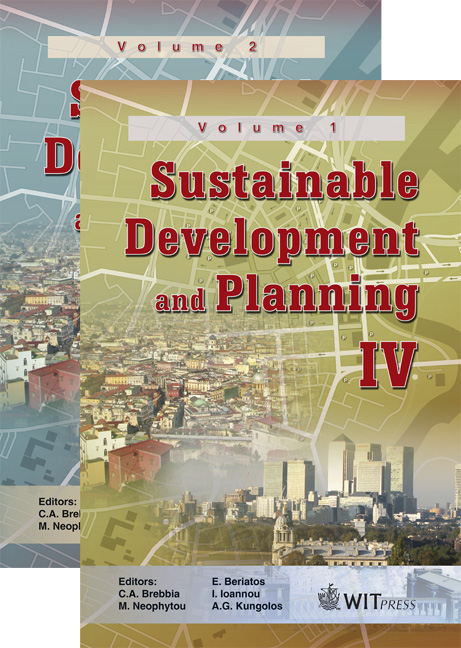Evaluation Of The Environmental And Economic Performance Of Sustainable Building Technologies For Apartment Houses In Korea
Price
Free (open access)
Transaction
Volume
120
Pages
7
Page Range
209 - 215
Published
2009
Size
320 kb
Paper DOI
10.2495/SDP090201
Copyright
WIT Press
Author(s)
H. J. Kang, Y. S. Yeom, J. C. Park & E. K. Rhee
Abstract
This study aims to evaluate the economic and environmental performance of sustainable building technologies applicable to multi-family residential buildings in Korea. The technologies investigated for the study include; ‘exterior insulation’, the ‘double envelope system’, the ‘floor radiant heating/cooling system’, the ‘solar hot-water system’ and the ‘photovoltaic system’. The energy performance of each technology was evaluated using \“EnergyPlus” as the simulation program. A sensitivity analysis was conducted in order to determine the relative influence of each technology in terms of energy consumption reduction in a sample building. A life-cycle cost analysis of a sample building designed with conventional technologies was also conducted to compare the result with the sustainable building technologies. The result of the study indicates that with the sustainable building technologies, although the initial investment costs are higher than conventional technologies, are more economical in terms of life-cycle cost due to the reduction of energy and environmental costs. Keywords: sustainable technologies, apartment houses, energy analysis, CO2 emission reduction, life cycle cost analysis, CO2 emission right price. 1 Introduction Unprecedented global warming in recent days has led to a great concern worldwide for the reduction of CO2 emissions. In Korea, the housing sector constitutes about 10% of total CO2 emissions related to energy consumption in Korea. Since apartment houses account for 85% [1] of the housing market in Korea, in order to effectively reduce CO2 emissions in the building sector,
Keywords
sustainable technologies, apartment houses, energy analysis, CO2 emission reduction, life cycle cost analysis, CO2 emission right price.





